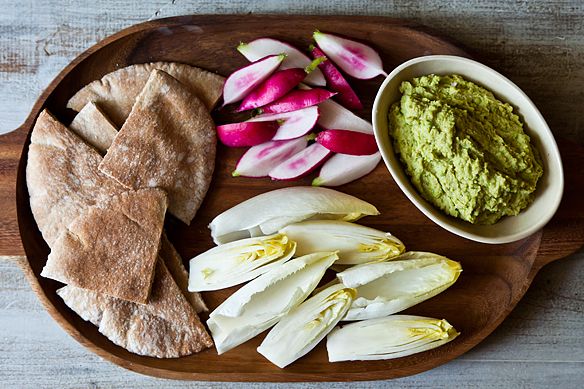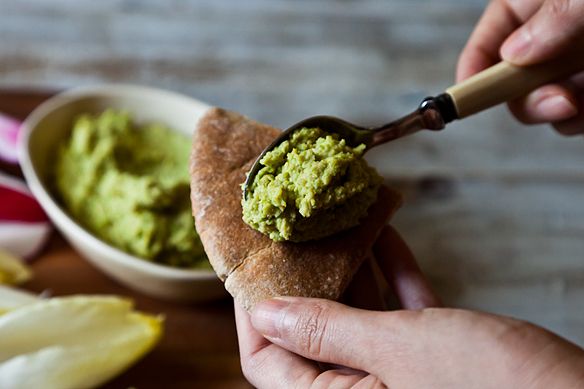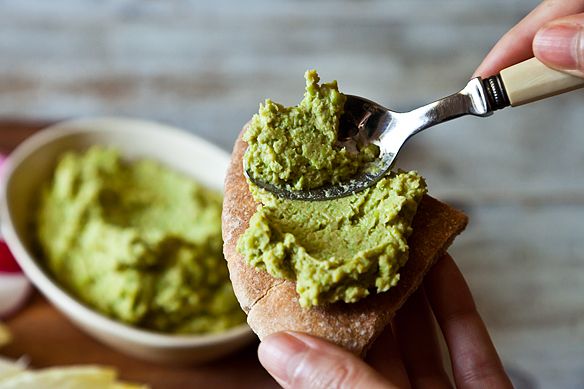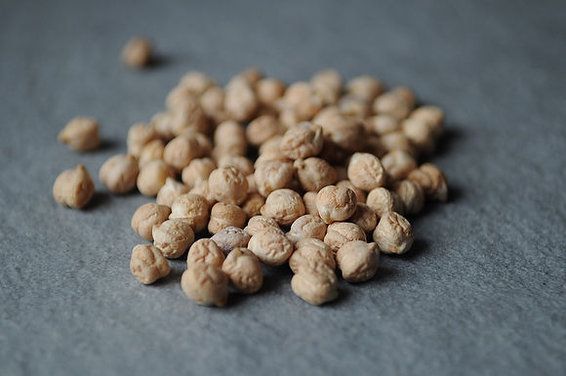
The Food52 Vegan Cookbook is here! With this book from Gena Hamshaw, anyone can learn how to eat more plants (and along the way, how to cook with and love cashew cheese, tofu, and nutritional yeast).
Order nowPopular on Food52
18 Comments
Leah
November 10, 2013
Can I substitute more garbanzo beans for the green peas? I'd like to make a basic hummus too. :-)
kakerz17
September 1, 2012
For anyone wondering how to soften the chickpeas I have found the perfect and most surefire solution. It may not be ok for people who avoid milk products(in which case I would use lemon juice instead to get close to the tendernes of my preferred method).
And that method is using whey from raw cow's milk. Not much, maybe a half cup settled into the soaking water that the dried chikpeas are put into for an overnight soak at room temp,NOT refrigerated. The next day, simply drain, rinse and add water again to cover chickpeas by an inch, along with one T unrefined sea salt and put on the fire until boiling. Then lower temperature and simmer for about an hour. Then keep tesing every 10 minutes or so till tender. Trust me, they will be so tender after this method, you will never go back to any other method. The chickpeas just taste and feel more digestable . You truly feel nourished this way. I also soak chickpeas like this for making homemade falafel too. You just don't boil chickpeas at all for falafel. But it also makes the texture extremely luxuriant and the taste like nirvana. I've been to Israel and experience the wonderful quality of hummus there but I honeslty feel the way I make mine now, it rivals those experiences and I've even tried my hummus on a few Israeli friends and they agree with my method and results.
And that method is using whey from raw cow's milk. Not much, maybe a half cup settled into the soaking water that the dried chikpeas are put into for an overnight soak at room temp,NOT refrigerated. The next day, simply drain, rinse and add water again to cover chickpeas by an inch, along with one T unrefined sea salt and put on the fire until boiling. Then lower temperature and simmer for about an hour. Then keep tesing every 10 minutes or so till tender. Trust me, they will be so tender after this method, you will never go back to any other method. The chickpeas just taste and feel more digestable . You truly feel nourished this way. I also soak chickpeas like this for making homemade falafel too. You just don't boil chickpeas at all for falafel. But it also makes the texture extremely luxuriant and the taste like nirvana. I've been to Israel and experience the wonderful quality of hummus there but I honeslty feel the way I make mine now, it rivals those experiences and I've even tried my hummus on a few Israeli friends and they agree with my method and results.
Stevie W.
July 16, 2012
Try using roasted garlic instead of raw. 6 large cloves in their skins wrapped in foil with a sprinkle of salt and olive oil roasted 40 mins at a moderate temp in the oven. Squeeze the resulting unctuous paste into the chickpea and sweet pea paste. And add a handful of chopped mint to finish. Divine!
Gena H.
July 16, 2012
Indeed, roasted garlic is a wonderful addition! I'm often too lazy to do it, but the results are definitely great.
bunny11
July 15, 2012
For those of us that can't find kombu,1/4 tsp of baking soda in the cooking water will also eliminate the gassy effect beans may cause.
eccoyle
July 15, 2012
The one and only time that I've cooked garbanzo beans, they took FOR.EV.ER and never got as tender as they should be. Any tips for cooking beans?
Gena H.
July 15, 2012
Sure!
First, they need an overnight soak. Forget the "quick soak" method--I actually don't find it to be very helpful. Just submerge them in a lot of water, and let soak overnight (or even longer).
The next day, you should rinse them, and then submerge them in enough cold water to cover them by a few inches. Bring to a boil and then lower to a simmer, cooking for an hour or so--you may need a little more time than that. It's largely inactive cooking time, so it shouldn't be too annoying. You can add a piece of kombu to the pot while it cooks to make the beans less "gassy", by the way--an ancient trick from Japanese cooking!
First, they need an overnight soak. Forget the "quick soak" method--I actually don't find it to be very helpful. Just submerge them in a lot of water, and let soak overnight (or even longer).
The next day, you should rinse them, and then submerge them in enough cold water to cover them by a few inches. Bring to a boil and then lower to a simmer, cooking for an hour or so--you may need a little more time than that. It's largely inactive cooking time, so it shouldn't be too annoying. You can add a piece of kombu to the pot while it cooks to make the beans less "gassy", by the way--an ancient trick from Japanese cooking!
veganamericanprincess
July 14, 2012
Great post!!! My homemade hummus is always too dry . Never as good as Whole Foods' original hummus!!! http://veganamericanprincess.com
weshook
July 13, 2012
We have found that when using canned chickpeas, it is important to add some liquid whether it be the liquid from the can or some water or the hummus isn't as creamy. The best part about homemade hummus is the infinite variety that is possible.
witloof
July 12, 2012
I find most commercial tahini bitter and nasty. Do you have a preferred brand, or do you make your own?
Gena H.
July 12, 2012
Hey Witloof!
I really like the Artisana raw tahini. It's amazing. That said, it's also quite expensive. Tree of Life's is also pretty good, though!
Gena
I really like the Artisana raw tahini. It's amazing. That said, it's also quite expensive. Tree of Life's is also pretty good, though!
Gena
Aoife
July 12, 2012
I love this post. I do make my own hummus a lot, and I think the main difference is cooking the chickpeas yourself, but I totally didn't know about using the water from tinned chickpeas when time is short! I'll definitely use it in the future. Also olive oil is something I haven't used for a while but I think I'll use it next time again on your advice!
Gena H.
July 12, 2012
Hey Aoife!
I think it's a great tip. Some folks find that that liquid isn't ideal for digestion; I've never noticed this, but what I have noticed is that it both enables blending and retains thick texture!
Gena
I think it's a great tip. Some folks find that that liquid isn't ideal for digestion; I've never noticed this, but what I have noticed is that it both enables blending and retains thick texture!
Gena
Edible B.
July 12, 2012
I personally love the tahini, oil, garlic, but usually ease up on the lemon juice... just not a fan of my hummus being too tart. I've had amazing results from making my own hummus, I will never go back to store bought again! Very interesting tip on warm beans!
jlgoesvegan
July 12, 2012
This is such useful information, particularly your advice to take it easy on the liquid! Love the addition of sweet peas to your recipe! Yum!
thirschfeld
July 12, 2012
Hummus is a staple at our house. We always have a batch of homemade in the fridge. I like to use the bean cooking liquid instead of water but I am like you I like it tart, easily spreadable and smooth. My favorite veggie for dipping has to be the Magda squash picked directly from the garden, sliced and used as a scoop.



 `
`



See what other Food52 readers are saying.